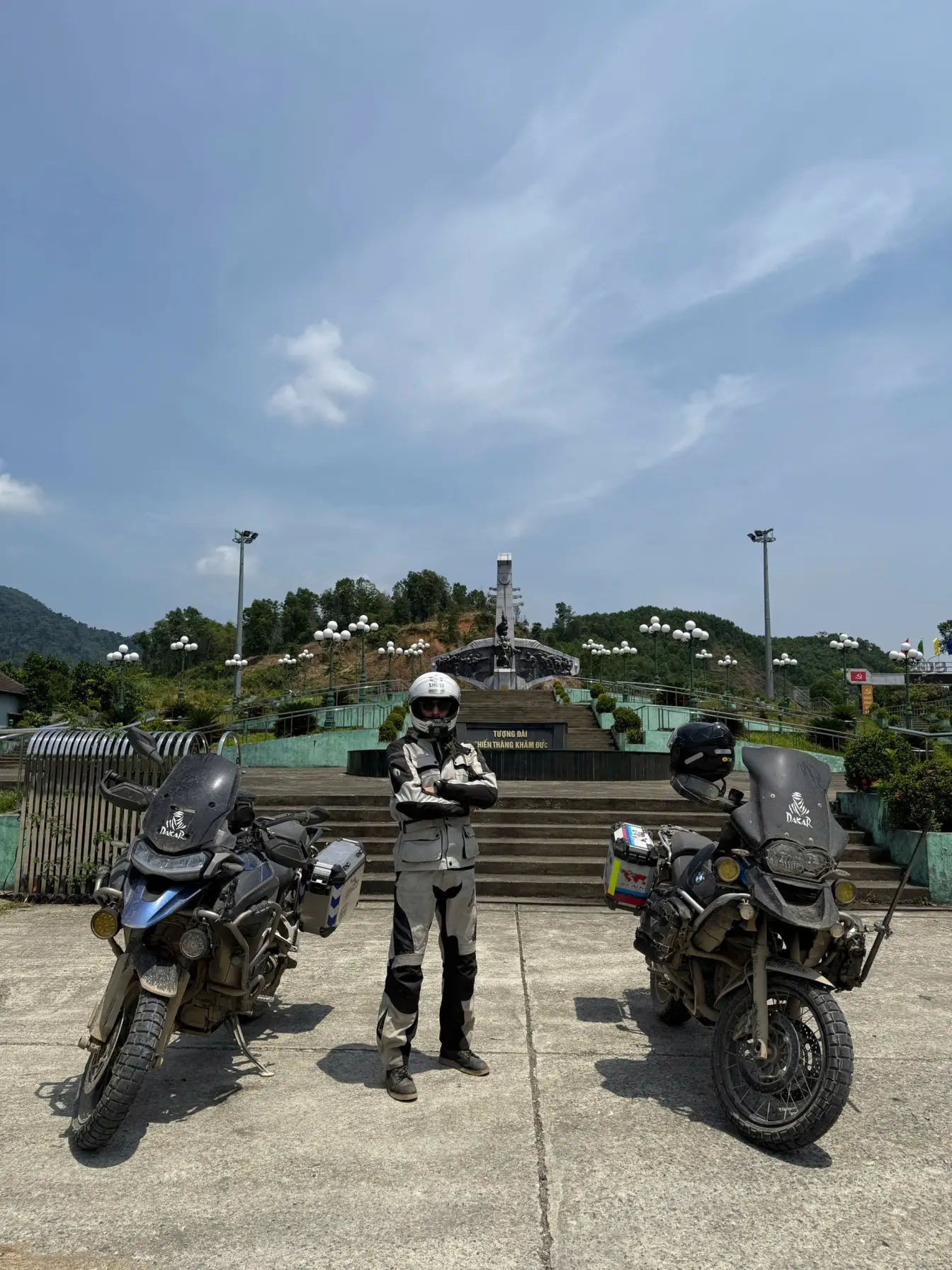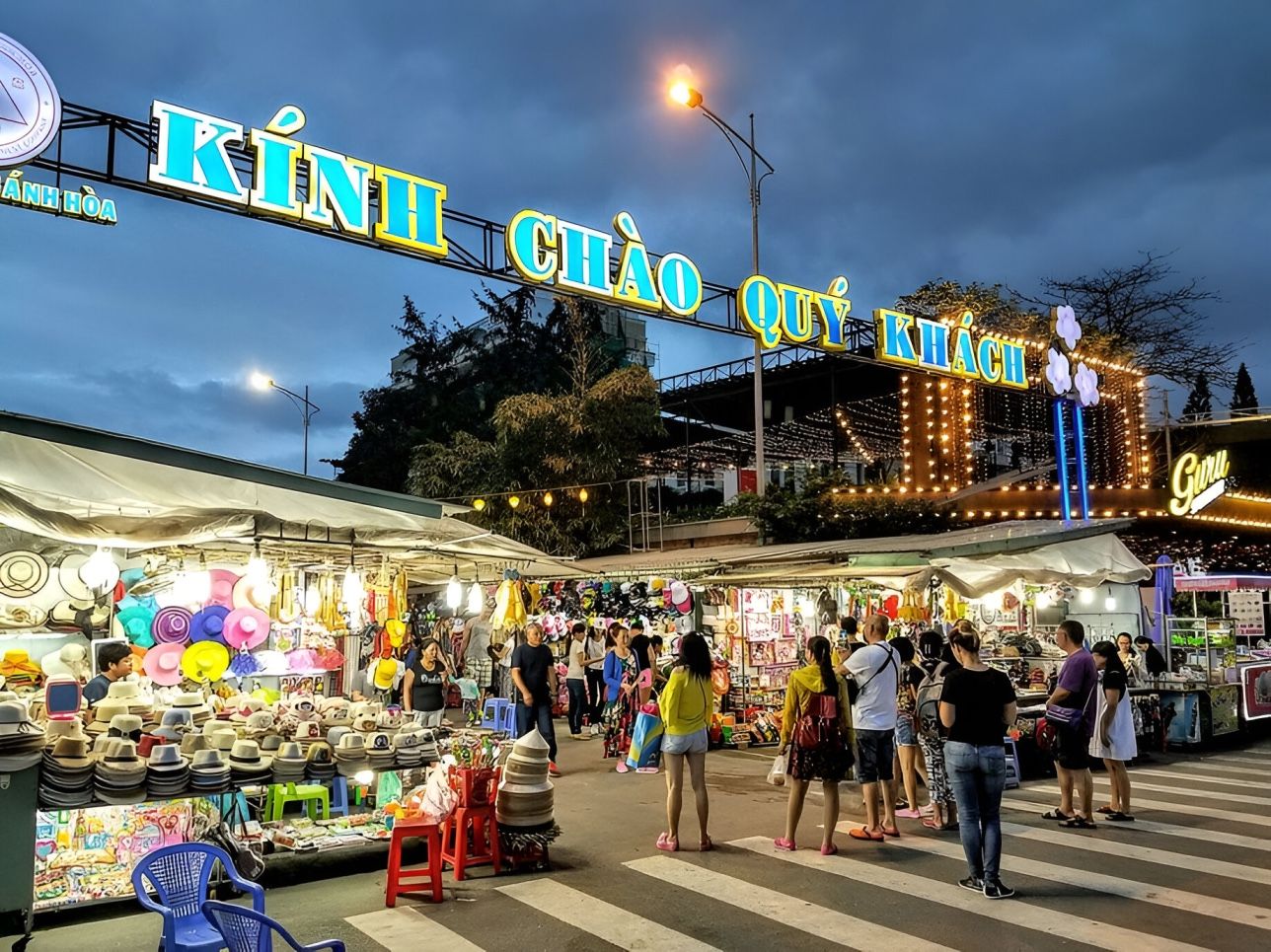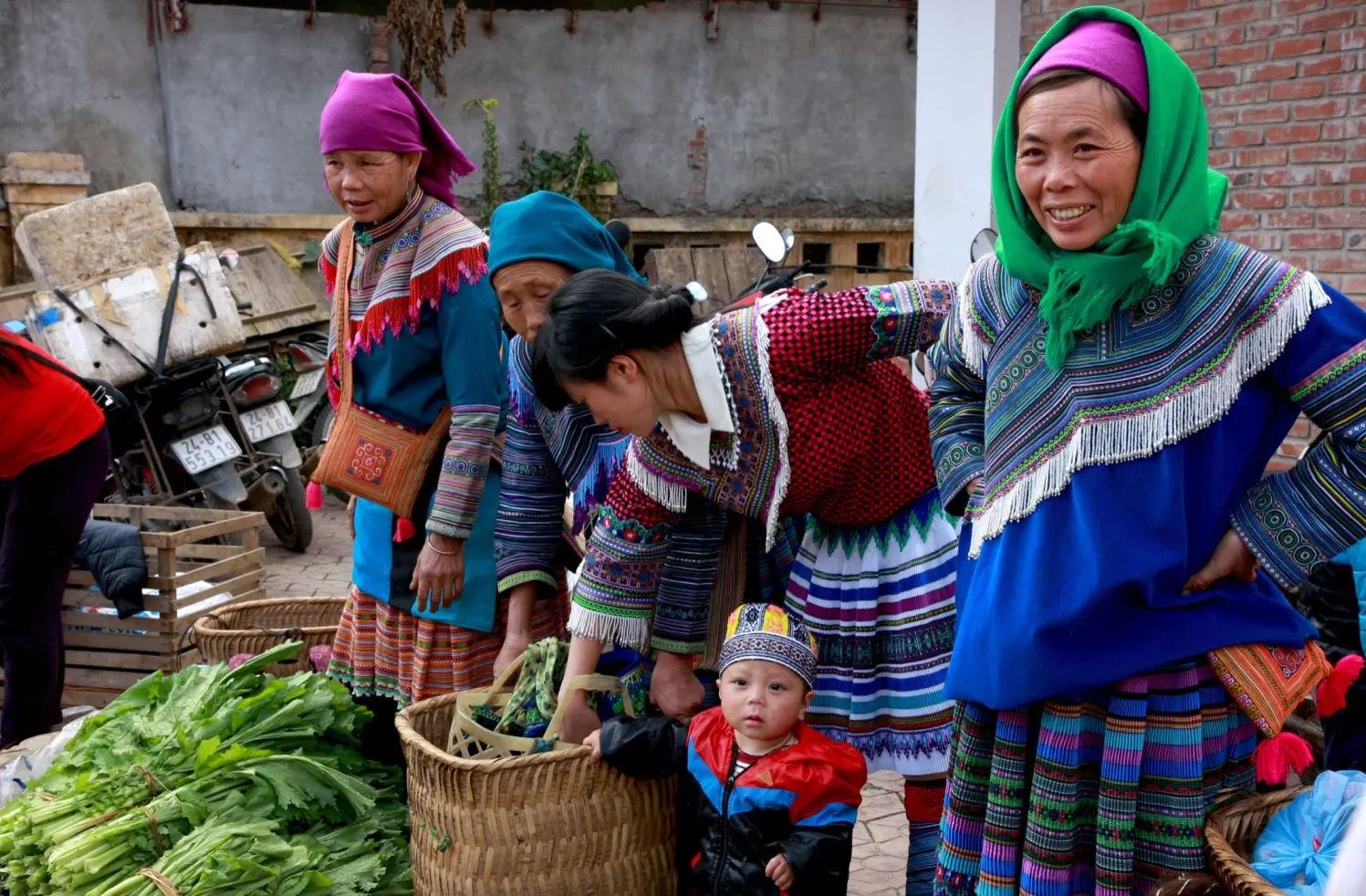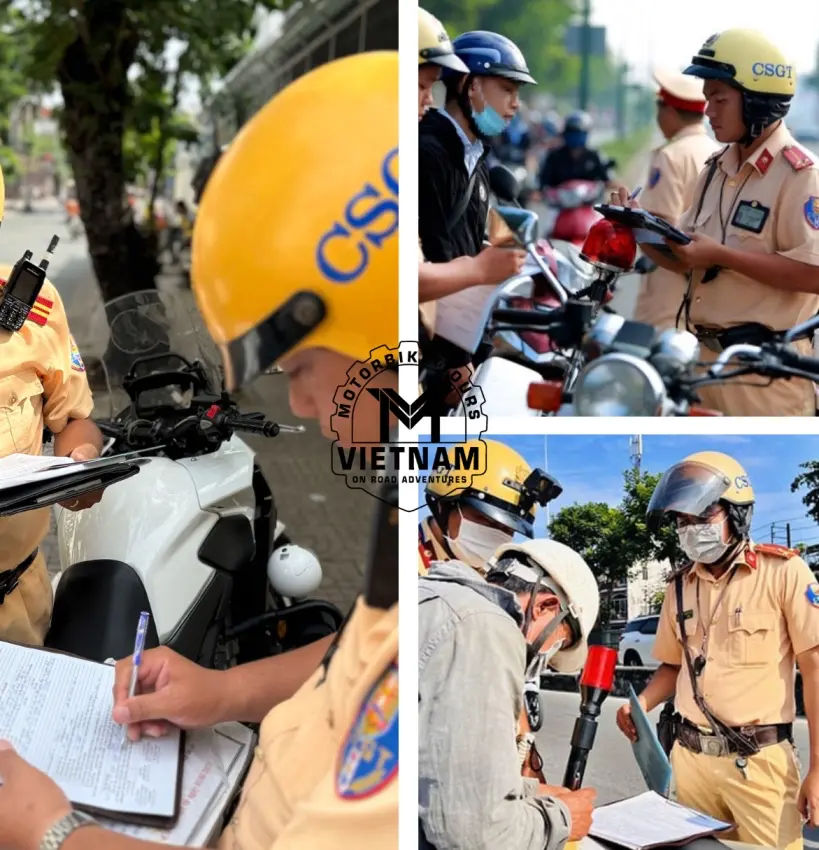
When you travel through Vietnam by motorbike, you pass countless markets that never show up in guidebooks. These are the places where locals actually shop, eat, and start their morning. I’ve seen riders in online forums often mention how stopping at markets like Bac Ha in Lao Cai, Dong Van’s Sunday Market in Ha Giang, or Hoi An Central Market gives them a clear sense of daily life, fresh herbs piled on low tables, bowls of noodles cooked in seconds, and vendors who chat with you even if you only know a few Vietnamese words. In the south, travelers often pull into Ben Thanh’s night market for snacks or Can Tho’s floating market for something more unique. Some markets are big and well-known, others are just a row of stalls that appear at sunrise and disappear by lunch, but they all make easy and interesting stops along any motorbike route.
Introduction to Local Markets and Motorbike Adventures
Many visitors are looking after a way to explore the real pace of a country and tell you one thing, exploring Vietnam by motorbike naturally brings you close to everyday life, and nothing shows it better than the country’s local markets.
Whether you’re passing through a mountain pass in Ha Giang or cutting across small farming towns in the Mekong Delta, markets often appear without warning sometimes just a cluster of stalls around a bus stop, other times a huge gathering that fills the whole street.
You hear the chatter of bargaining, smell grilled meat or fresh herbs, and see baskets of vegetables that were probably picked earlier that morning. Many riders say these markets give them short but memorable breaks on long drives, offering a seat, a drink, or a quick bowl of noodles before continuing the journey. Even if you’re not shopping for much, stepping into a market helps you understand the rhythm of local life, something you won’t get by only visiting well-known attractions.
- Check out top 10 night markets to visit in Vietnam
- Find out the Ho Chi Minh City’s night markets
Why Visiting Local Markets Makes Your Trip Unique
Local markets add texture to your motorbike trip because they show the real side of each region. In big cities like Hanoi and Ho Chi Minh City, markets feel fast and noisy, with vendors calling out and small motorbikes weaving through narrow lanes.
But once you ride out into the countryside, the pace shifts. You might see farmers selling produce straight from their baskets, or families sharing breakfast on plastic stools. What makes these stops meaningful is the mix of small interactions someone offering tea, a vendor explaining a fruit you’ve never seen, or a shopper recommending where to find the best bánh mì.
These moments connect you to people who live far from the usual tourist paths. Every market has its own personality, shaped by local food, traditions, and the landscape around it, so each stop feels a little different from the last.
- Check out Adventure Motorcycle Tours in Vietnam
Top local markets worth a visit on your motorcycle trip
Top Local Markets to Explore by Motorbike
Vietnam has countless markets, but a few stand out among motorbike travelers. In the north, Bac Ha Market is known for its bright colors and ethnic minority groups, while Dong Van’s Sunday Market draws people from around the entire Ha Giang loop.
Central Vietnam’s Hoi An Central Market is a convenient stop for spices, fresh noodles, and early-morning food stalls. In the south, riders often visit Ben Thanh’s night market for quick snacks or head deeper into the Mekong Delta to catch the Cai Rang floating market at sunrise. If your route extends into Laos or Cambodia, well-known stops like Luang Prabang Night Market or Phnom Penh’s Russian Market offer everything from handmade crafts to bike gear. These markets fit naturally into most travel routes and make your trip feel more grounded in local culture.
Traditional Food Markets in Rural Villages
Rural food markets are often the most authentic stops of all. They usually start early, sometimes before sunrise, when farmers arrive with baskets of vegetables, fresh herbs, and cuts of meat from animals raised just a few kilometers away. You may see women sorting through mountains of leafy greens, men carrying woven baskets filled with mushrooms, or kids helping their families stack produce.
These markets feel very local there are no flashy signs or tourist stalls, just simple trading and daily routines. Riders who stop at these places often mention that they find the best meals in these villages: steaming bowls of phở or bún, grilled pork skewers, or rice dishes prepared right next to the stalls. The markets aren’t big, but they show how communities live day to day and how food moves from farms to families.
Handicraft and Souvenir Markets
Handicraft markets give you a chance to see local creativity up close. In northern provinces like Lao Cai or Yen Bai, ethnic minority groups sell handwoven fabrics, embroidered clothing, and silver jewelry that reflect generations of tradition. In central towns like Hoi An, small stalls offer lanterns, bamboo products, and wood carvings made by local artisans.
What makes these markets enjoyable is the slower pace vendors often explain how something was made, or you might watch someone weaving or shaping an item right in front of you. Motorbike travelers appreciate these stops not only for shopping but also for learning how local crafts survive in modern times. Even if you don’t buy anything, it’s interesting to see the variety of materials and styles that come from different parts of the country.
Night Markets Full of Local Culture
Night markets provide a different atmosphere from morning ones. They usually open around sunset, when temperatures cool and crowds come out to eat, shop, and socialize.
In places like Da Nang, Hue, or Ho Chi Minh City, night markets are full of street food grilled seafood, sweet snacks, icy drinks, and dishes served from small carts. The lights, music, and steady flow of people make these markets feel lively but not overwhelming.
Many riders use night markets as a way to wind down after a long day on the road. You can wander slowly, try a few dishes, and watch how families and groups of friends enjoy their evening. These markets aren’t just about buying things; they’re about experiencing a place when it’s most relaxed and social.
Weekend and Floating Markets
Weekend markets often draw larger crowds and bring in traders from surrounding villages. The energy is higher, and the variety of goods is bigger livestock, fresh fruit, handmade clothing, tools, and even mobile phone accessories.
Markets like Bac Ha or Dong Van become social gatherings where people meet relatives, share meals, and trade stories along with goods. In the south, floating markets like Cai Rang and Phong Dien offer something completely different.
Vendors sell directly from their boats, and buyers move between them in small canoes.
You’ll see piles of fruit, bags of rice, and even breakfast dishes cooked right on the water. Motorbike riders often leave their bikes at the pier and join a quick boat tour, turning the morning into a refreshing break from the road. Floating or weekend, these markets show a side of local life that changes with the day and season, making each visit feel unique.
Best Countries and Regions for Market Exploration
It’s really difficult to say and name them all here. Many travelers agree that some of the best market experiences in the world are found across Asia, especially in countries where daily shopping still relies on fresh produce and handmade goods rather than supermarkets.
Southeast Asia, South Asia, and parts of East Asia all offer markets that feel lively and personal, but each region has its own style.
Vietnam and Cambodia are known for early-morning food markets and small village stalls, while Thailand offers a mix of organized night markets, floating markets, and street-focused food scenes.
Indonesia and the Philippines have coastal markets with seafood brought in straight from the fishing boats. Even within one country, markets can look completely different depending on the landscape mountain towns often focus on herbs and textiles, while regions near rivers or coastlines lean more toward fish, fruit, and spices. Exploring markets in these places gives you a clearer sense of how people live, cook, and trade every day.
Southeast Asia’s Hidden Market Gems
Southeast Asia has countless markets, but some of the most memorable ones are found far from big tourist centers.
In Laos, villages around Luang Namtha and Phongsaly hold morning markets where ethnic minority groups offer forest vegetables, wild honey, and handmade baskets. Travelers often mention how these markets feel untouched, with no pressure to buy and no crowds.
In Cambodia, small towns like Kampot and Battambang have local markets filled with fresh pepper, dried fish, and simple food stalls that show the country’s everyday flavors. Even in well-visited Thailand, areas like Mae Hong Son or Nan host quiet markets where locals gather long before tourists wake up. These hidden spots are not flashy, but they show a raw, everyday side of life that’s easy to appreciate when traveling by motorbike.
- Check out our amazing motorcycle tours in Laos
Local Markets in Vietnam and Thailand
Vietnam and Thailand both have strong market cultures, but each country offers a different experience. In Vietnam, the focus is often on early-morning activity. You see farmers unloading baskets of herbs, vendors making fresh noodle dishes, and families doing their daily shopping before work. Markets like Dong Van, Bac Ha, and Can Tho’s floating markets are often recommended by travelers for their energy and variety.
Thailand, on the other hand, is well-known for its night markets. Cities like Chiang Mai, Bangkok, and Phuket come alive in the evening with food stalls, small shops, and open-air seating areas where people gather for dinner. Thailand’s weekend markets such as Chatuchak offer everything from clothing to plants, while its floating markets have a slower, more traditional feel.
Visiting markets in both countries helps you understand how each culture eats, shops, and spends its free time.
Tips for Riding to Local Markets Safely
Riding to markets is usually simple, but the busy environment means you need to stay alert. Many markets have tight entrances where pedestrians, motorbikes, and small carts all move at the same time, so it’s better to slow down and park a little farther away rather than trying to push through the crowd. Keep your valuables secure, especially in big cities where markets get crowded.
If you’re visiting early in the morning, watch out for wet floors around seafood or vegetable sections, as these areas can be slippery. In rural towns, dogs sometimes wander near the road, so ride carefully when approaching village markets. It also helps to ask a vendor or parking attendant where it’s safe to leave your motorbike. Most markets have small paid parking lots nearby, and the fee is usually very cheap. Taking these small precautions keeps your visit relaxed and stress-free.
How to Interact with Local Vendors Respectfully
A friendly and respectful approach goes a long way when visiting markets in Vietnam, Thailand, or any part of Southeast Asia. A simple greeting like “xin chào” in Vietnam or “sawasdee” in Thailand shows you’re making an effort, even if you don’t speak much of the language.
Vendors appreciate patience, especially during busy hours when they’re serving multiple customers. If you want to take photos of people or their stalls, it’s polite to ask first with a quick gesture or a smile. Bargaining is normal in many markets, but it’s best to do it gently and avoid pushing too hard over small amounts of money. Buying a small item, even if you don’t need much, is a nice way to support local sellers. These small interactions create positive experiences and help you understand the values and rhythms of local communities.
Conclusion: Experiencing Culture Through Local Markets
Local markets are all worth a visit, they remain one of the easiest and most genuine ways to understand a place, especially when traveling by motorbike.
You see what people cook, how families shop, and what foods or products matter most in each region. A short visit to a morning market in Vietnam or a night market in Thailand often tells you more about daily life than any large attraction. The small interactions asking about a fruit, watching someone prepare breakfast, or buying something handmade—stay with you long after you leave.
Markets also remind you that culture is not limited to museums or historic sites; it’s found in the routines people follow every day. Whether you stop for five minutes or linger for an hour, these markets offer experiences that shape your journey in a personal and memorable way.
About the Author
Hamid is a rider rather than a writer, based in Vietnam who focuses on practical guides, local culture, and everyday experiences across Southeast Asia. He spends most of his time exploring cities, small towns, and rural roads often by motorbike to understand how people live, eat, and travel. His writing aims to give readers clear, useful information without losing the local stories that make each place unique.











